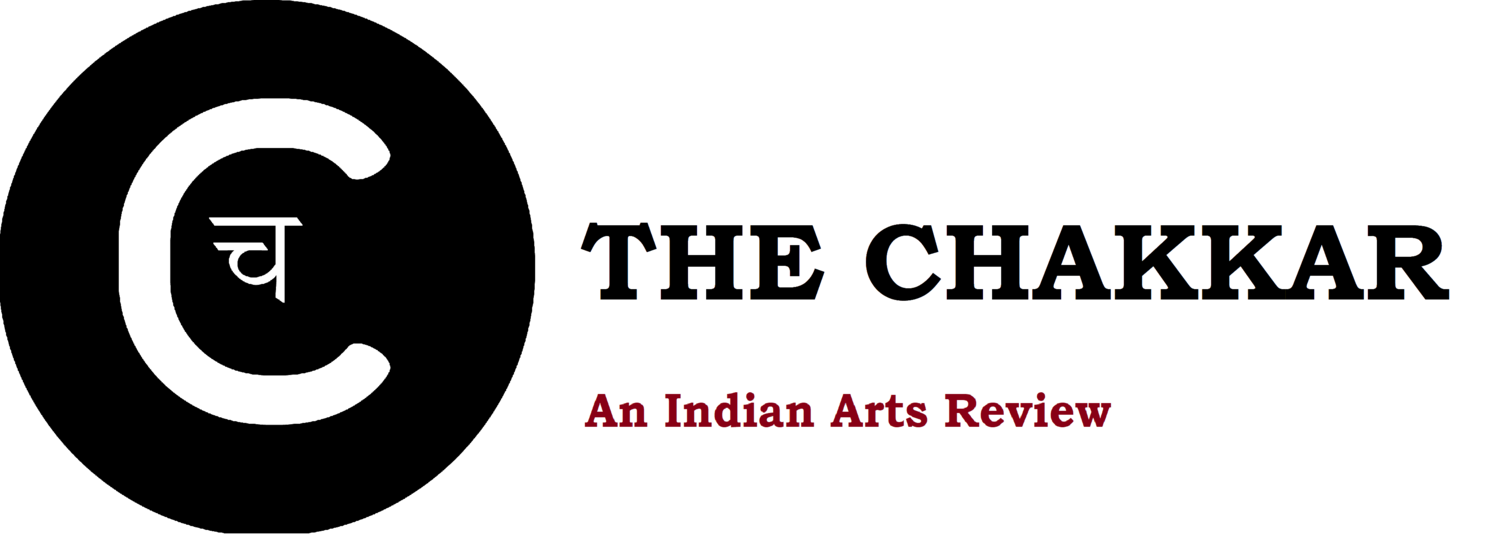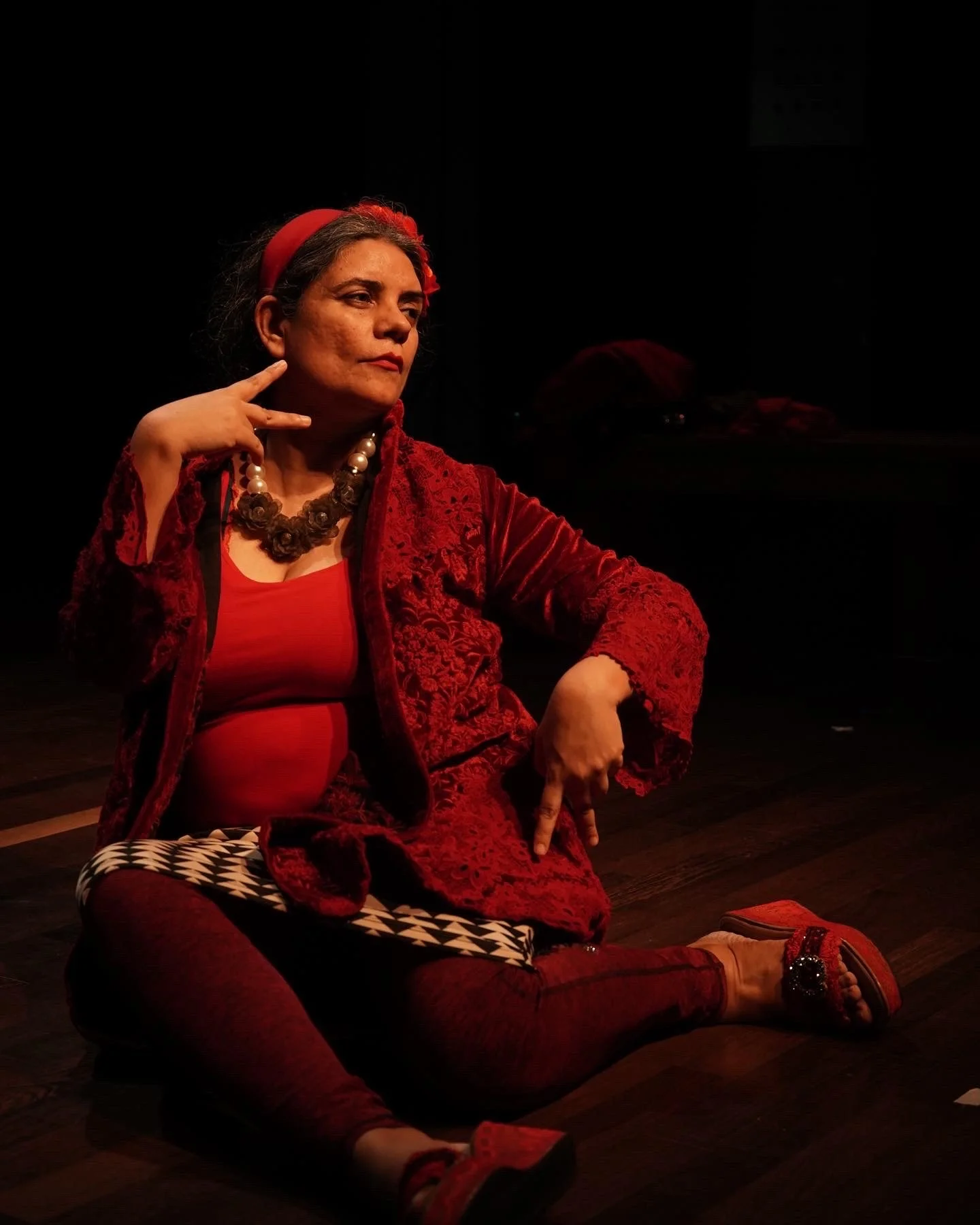Jyoti Dogra’s MAAS: The Body and Its Desires
Delivered with humour and discomfort, Jyoti Dagra’s solo performance Maas examines the politics of beauty and its intersections with social media, the public and the private gaze, and our capitalist society’s conception of female beauty.
Jyoti Dogra stands still on the stage for a long minute, and then, slowly, begins to move in an almost-sleepwalk across her imagined ramp. She is a total diva, loving the attention, luxuriating in the number of eyes on her. And then it seems, a chicken sandwich comes flying onto her face. And then an egg sandwich, then chicken nuggets, and veg nuggets. “That was the dream sequence,” she says.
The dream is the story of Dogra’s body, how it oscillates in moments from a luscious fantasy to her worst nightmare. It is also the story of the chicken sandwich, the egg sandwich, the chips, the next-door neighbour aunty, the 14-year-old boy on a bicycle who kept cycling around her, the many diet charts, and her surgery plans. This quick mood-flip is a tightrope walk: Dogra’s solo performance Maas is the story of all these people and things, but it is mostly about walking a tightrope with the knowledge that there is only this one body that you can walk with. And you will be seen as you walk... until you aren’t seen anymore.
Through Maas, Dogra looks at the politics of flesh and flab in the ageing woman's body, by placing her own experience as the central motif of the work. I watched the performance at its Mumbai premiere at Prithvi Theatre. Since then, she has toured the country with multiple shows in Delhi, Mumbai, Chennai, Bengaluru, and Thiruvananthapuram among other cities. The play examines the politics of beauty and its intersections with social media, the public and the private gaze, and our capitalist society’s conception of female beauty.
A particular strength of Dogra’s work is that she writes herself in and out of the text in a state of suspension: Dogra the actor performed for Dogra the playwright; Dogra who struggles with body image, and Dogra who has the gall to call herself out with feminist rhetoric.
Dogra begins with a simple desire, the desire to be seen. But how does being seen make one feel, when all they can think about is the extra flesh in their belly, of a face filled up with acne or pores, of a receding hairline? She says that, despite all this, she would rather be seen than not seen at all; that her worst nightmare would be if people walked right past her and don’t realize her existence.
On stage, Dogra attempts to ease the stronghold of this tightrope by sharing fashion tips to ensure that onlookers don’t notice if one has grown fat: Wear a nice bright large coat; wear clothes with vertical patterns that repeat so that people are so hypnotized by the optical illusion of your clothing that they don’t notice your stomach; and of course, don’t forget to wear some lovely heels. Like an online fashion influencer, she shares these tips with a straight face, demonstrating for best effect. She incorporates tremendous ingenuity to make the body impulse meet her writing: Her finger will move repeatedly, she will shake her own flesh as if she is spasming, she will headbang and dance to a “fun sequence” as she weeps uncontrollably.
Maas is full of these little scenes that swing in large sways from being anecdotal to hilarious, ridiculous to ultimately smacking us in the face to look at all the humbug we sell ourselves and each other, and drop our jaws at its absurdity. A particular strength of Dogra’s work is that she writes herself in and out of the text in a state of suspension: Dogra the actor performed for Dogra the playwright; Dogra who struggles with body image, and Dogra who has the gall to call herself out with feminist rhetoric. These are all Dogras, being watched over by a performer who closely inhibits each role, and somehow, maintains a sense of detachment with herself, too.
The beauty of Maas lies in this state of suspension, in the humour and sarcasm that crawls its way into the performance. Dogra’s writing has little easter eggs of gold-folded through it, in ways that even stand-up comedians could aspire to. The jokes, however, interact with the laughter from the audience, too: Are we laughing with her, or at her? Just when the audience begins to feel too cushy with the joke, Dogra transforms humour into a moment that is utterly uncomfortable and difficult to wrestle with.
In one scene, she plays a young woman—probably in her thirties—whose approach of dealing with people calling her fat is denial. “Moti, main kahan se moti hoon? Main tho yoga karti hun. Aur yoga karne wale mote ho hi nahi sakte. Aapko lag raha hai main moti hun? Nahi na?” (Fat? How am I fat? I practice yoga, and those who practice yoga can never be fat. Am I appearing fat to you?) She proceeds to demonstrate a yoga posture, in which she has to just gently lift one leg, breathe in, gently bring the leg above her head and gently back-flip, gently somersault in the air, and gently land on the audience in some kind of a mid-air pose as she gently breathes out. “How can I be fat? I do yoga, don’t I? If it wasn't for all of you watching and making me nervous, I could’ve shown you this asana.”
The crowd’s hilarious reaction to the madness on stage is but a mirror; a reminder that the madness Dogra pedals is a madness that many of us peddle for ourselves, too. Dogra manages to break the laugh when it starts to feel too comical—and in turn, the audience freezes, too. “I wanted the protagonist of this play to be this woman who is in denial that she is fat,” she says. “But if I had written it that way, this play would’ve been a joke. And this is a play about my body; I can’t let that be a joke.”
The only time I felt a twinge of betrayal in Dogra’s writing was when she played a working-class woman, speaking with an exaggerated Punjabi accent, and a lack of self-awareness that caricaturized this ‘character’. The sense of being on edge, and flipping the joke just when people start to laugh at the woman on stage, is what gives power to Maas—and self-respect to her characters. When the joke doesn’t ‘flip’, the laughter that follows feels queasy.
The closing 20 minutes presented the strongest moments of the performance. Now, Dogra is exhausted by the tightrope act. There is this palpable desire to be seen, to be desired—not just by others, but by oneself. “That's the thing about beauty,” she says. “It makes you want to be a part of it.”
And what do we do when, we look at the mirror, and instead, see a body or face that is forever climbing on an arduous trek towards the peak of beauty, without ever making it to the summit? We lock ourselves away, we boycott the warmth of the sun, hide from the world, become invisible to everyone the world but the mirror. We continue to trudge forward on that arduous trek; but this time, with only our private shame.
Jyoti says she is tired. She is tired of the creams and mascaras and diets and makeup and the uphill climb towards an ideal body that somehow promises to bring her joy. By this point, she has reached the brink, seated at the tipping point between the dark stage and the gallery. She is barely visible, hardly heard.
“Six out of ten men are unhappy, dissatisfied, or dysmorphic in their own bodies,” she says. “Nine out of ten women are unhappy, dissatisfied, or dysmorphic in their bodies. There are 200 people in this auditorium. 110 men, 90 women. 66 men are unhappy, dissatisfied, or dysmorphic in their own bodies. 81 women are unhappy, dissatisfied, or dysmorphic in their own bodies.”
I began thinking of myself as a part of this auditorium, and wondered if I fit this statistic too. It made me feel suspended. I am nearly anonymous in this city, and the gaze of others had felt distant and light. Two hours ago, I had confidently occupied the front row, not too concerned about my appearance or clothes, or about taking up space. But now, as I sit in that front row, Dogra’s gaze falls directly on me. She is less than an arm’s length away, standing in the dark. I feel taken into a vortex where even the most absurd stories she narrated suddenly flip. I see a glint of myself in each of them.
Dogra says that she is tired. She is tired of aspiring for a body that is 10 kilos, 14 kilos, 27 kilos lighter, tired of seeking a face with fewer pores. Tired of looking for a distorted key to joy. “If I stand here, in the dark, and tell you that this is the only body I will ever inhabit, is that enough?” she asks. “If I stand here in the dark and tell you that this is your body, and the only one you will ever inhabit, and it may never be complete, but it is yours and it is yours to savour and inhabit fully… if I stand here in the dark and tell you this, is that enough?”
I feel seen, recognized. Being seen feels desirable, even luxurious. And that is enough for me to savour.
***
Prerna is a student of english, gender studies and music, presently living in Chennai. They also try to teach and write, a lot of which comes out of navigating these multiple worlds and trying to locate themself amidst the intersecting currents of culture, feminism, caste privilege and queerness. You can find them on Twitter: @prernasridhar05.


